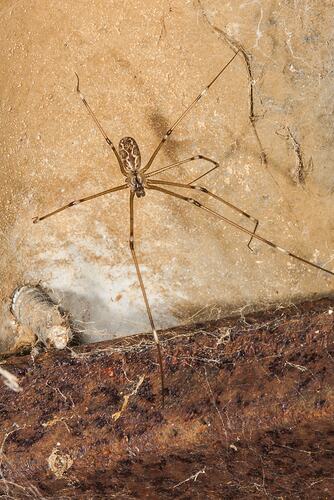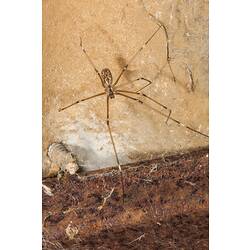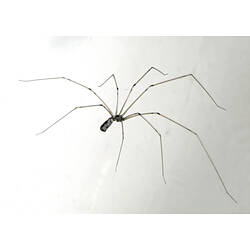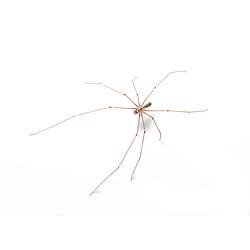General Description
Spider small and cylindrical with very long, thin legs. Pale brown to cream colour with darker markings on the legs and cephalothorax. Body up to 1 cm long.
Biology
Daddy Long-legs are the subject of an urban myth: contrary to belief, their venom is not the most deadly in the world (they are known to prey on the highly-venomous Redback Spider, but they are harmless to humans). They feed on small invertebrates, including other spiders. The females wrap their eggs with silk, making a circular bundle that they carry in their mouth until the eggs hatch.
Distribution
Mainland Australia and Tasmania.
Habitat
Indoors, and outdoors in sheltered places like sheds and underneath balconies.
More Information
-
Animal Type
-
Animal SubType
-
Brief Id
Very long thin legs, small body.
-
Colours
Brown, Grey
-
Habitats
Wetland, Urban, DryForest, WetForest, Woodland, Mallee, Grassland
-
Where To Look
-
Diet
Invertebrates
-
Diet Categories
Insects, Spiders
-
Hazards
Harmless, local reaction if any (may include redness, swelling, burning or itching at site of bite).
-
Endemicity
-
Conservation Statuses
CITES: Not listed, FFG Threatened List: Not listed, EPBC Act 1999: Not listed, IUCN Red List: Not listed
-
Web
Web
-
Taxon Name
-
Scientific Author
(Füessly, 1775)
-
Common Name
Daddy Long-legs
-
Kingdom
-
Phylum
-
Subphylum
-
Class
-
Order
-
Infraorder
-
Family
-
Genus
-
Species Name
phalangioides





